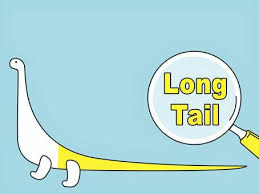Statistical information released by the government is summarized. If you would like to check more detailed information, please check the General Office of Government Statistics (e-Stat) or statistical data published by each ministry and agency.
Percentage of people who feel lonely by current occupation
When looking at loneliness based on current occupation, there are variations in the levels of loneliness:
- Regular employees and non-regular employees, self-employed individuals, and family workers/homeworkers experience “frequent/constant” loneliness in the range of 5.0% to 5.9%. The percentage of those who “sometimes” feel lonely ranges from 13.3% to 17.3%, and those who feel “almost none” of it range from 38.4% to 44.9%.
- Company executives, students, unemployed individuals, and others report “frequent/constant” levels of loneliness ranging from 1.7% to 5.4%. The percentage of those who “sometimes” feel lonely ranges from 16.1% to 20.6%, and those who feel “almost none” of it range from 38.4% to 39.8%.
- Unemployed individuals experience relatively high “frequent/constant” loneliness at 9.9%, and the percentage of those who “sometimes” feel lonely is also high at 20.6%, indicating a noticeable trend of loneliness among the unemployed.
These findings highlight varying patterns of loneliness based on gender and current occupation, suggesting that individual experiences in different situations may influence feelings of loneliness.
| By gender and current job | Often/always | Sometimes there is | Even if there is | Hardly any | Never | No answer |
|---|---|---|---|---|---|---|
| Full-time Staff/Employees | 5.0 | 17.3 | 20.8 | 38.5 | 18.2 | 0.1 |
| Non-regular staff/employees | 5.3 | 16.3 | 20.5 | 41.0 | 16.5 | 0.2 |
| Officers of the company, etc. | 1.7 | 16.1 | 18.6 | 38.4 | 24.6 | 0.6 |
| Self-employed | 3.3 | 13.3 | 18.4 | 44.9 | 19.4 | 0.7 |
| Family Employee/In-house Worker | 5.9 | 14.9 | 21.7 | 38.9 | 18.1 | 0.5 |
| Student/Pupil | 4.5 | 16.4 | 20.3 | 34.0 | 24.8 | – |
| Unemployed | 9.9 | 20.6 | 23.7 | 32.6 | 12.8 | 0.5 |
| Unemployed | 4.5 | 13.8 | 18.2 | 44.4 | 18.2 | 0.9 |
| other | 5.4 | 15.6 | 15.8 | 39.8 | 21.2 | 2.1 |
Percentage of people who feel lonely by current occupation (by gender)

When comparing loneliness between men and women, the following trends are observed:
For Men:
- “Frequent/Always” feelings of loneliness are reported as 4.9% among regular employees, 5.6% among non-regular employees, 1.9% among company executives, and 4.0% among self-employed individuals.
- In each occupation, “Sometimes” feelings of loneliness are quite common, with rates around 20%.
For Women:
- Women, like men, commonly experience “Sometimes” feelings of loneliness, especially among regular employees, non-regular employees, and self-employed individuals, where the rates are around 20%.
- Female company executives report “Frequent/Always” feelings of loneliness at 1.1%, while self-employed women report 1.8%.
| Often/always | Sometimes there is | Even if there is | Hardly any | Never | No answer | |
|---|---|---|---|---|---|---|
| Male | Regular Employee/Employee | 4.9 | 16.1 | 20.2 | 41.0 | 17.7 | 0.1 |
| Male | Non-regular employee/employee | 5.6 | 16.8 | 20.9 | 41.3 | 15.1 | 0.3 |
| Male | Company Officer | 1.9 | 16.9 | 19.2 | 35.6 | 25.7 | 0.8 |
| Male | Self-employed | 4.0 | 13.0 | 16.6 | 45.7 | 19.9 | 0.8 |
| Male|Family Employee/Domestic Worker | 10.0 | 13.3 | 16.7 | 46.7 | 13.3 | – |
| Male | Student/Student | 3.8 | 16.7 | 17.5 | 33.3 | 28.6 | – |
| Male | Unemployed | 11.6 | 21.4 | 23.1 | 30.1 | 13.9 | – |
| Male | Unemployed | 5.5 | 13.4 | 16.5 | 45.0 | 18.3 | 1.3 |
| Men | Other | 6.2 | 17.3 | 14.4 | 39.5 | 20.6 | 2.0 |
| Female | Full-time Staff/Employees | 5.2 | 19.1 | 21.6 | 34.8 | 19.1 | 0.1 |
| Female | Non-regular Staff/Employees | 5.1 | 15.9 | 20.5 | 41.3 | 17.1 | 0.2 |
| Women | Company Officers | 1.1 | 14.0 | 17.2 | 46.2 | 21.5 | – |
| Female | Self-employed | 1.8 | 13.2 | 21.9 | 43.8 | 18.7 | 0.5 |
| Female|Family Employee/In-house Worker | 5.2 | 15.2 | 22.5 | 37.7 | 18.8 | 0.5 |
| Female | Student/Student | 4.4 | 16.1 | 22.2 | 35.5 | 21.8 | – |
| Women | Unemployed | 8.3 | 19.4 | 24.3 | 35.0 | 12.1 | 1.0 |
| Female | Unemployed | 3.8 | 14.0 | 19.2 | 43.9 | 18.2 | 0.8 |
| Women|Other | 4.7 | 14.3 | 17.0 | 40.3 | 21.5 | 2.2 |
The percentage of people who feel lonely by their current occupation and age group

From this data, several observations can be made:
- Differences in Loneliness by Age Groups: Loneliness levels vary by age group. For example, among 16 to 19-year-old students, “Sometimes” loneliness is relatively high, and the same applies to unemployed individuals in the same age group. On the other hand, the “Frequent/Always” loneliness is relatively high among unemployed individuals aged 60 and above.
- Variation in Loneliness by Occupation: There are differences in loneliness levels depending on occupation. For instance, non-regular employees and self-employed individuals show a relatively higher percentage of “Frequent/Always” loneliness. Also, individuals in roles such as company executives and family workers/home-based workers experience loneliness, although the degree of loneliness varies among them.
- Loneliness Among the Unemployed: A significant percentage of unemployed individuals experience high levels of loneliness. This could be attributed to the reduction in social connections that may occur when one loses their job, leading to feelings of isolation.
These insights provide valuable information on how factors such as age, occupation, and gender may influence feelings of loneliness and can aid in understanding the complex nature of loneliness.
| By age group and current job | Often/always | Sometimes there is | Even if there is | Hardly any | Never | No answer |
|---|---|---|---|---|---|---|
| 16-19 years old | Regular Staff/Employees | 12.5 | 50.0 | 12.5 | 25.0 | – | – |
| 16-19 years old | Non-regular staff/employees | 28.6 | 42.9 | – | 14.3 | 14.3 | – |
| 16-19 years old | Company Officer | – | – | – | – | – | – |
| 16-19 years old | Self-employed | – | – | – | – | – | – |
| 16-19 years old | Family Employee/Employed | – | – | – | – | – | – |
| 16-19 years | student/student | 3.4 | 16.3 | 16.3 | 35.3 | 28.8 | – |
| 16-19 years old | unemployed | 33.3 | 33.3 | – | – | 33.3 | – |
| 16-19 years old | unemployed | 40.0 | – | – | 20.0 | 40.0 | – |
| 16-19 years old | Other | 16.7 | – | 16.7 | 16.7 | 50.0 | – |
| 20-29 years old | Regular Staff/Employees | 4.8 | 19.0 | 19.7 | 33.5 | 22.9 | – |
| 20-29 years old | Non-regular staff/employees | 11.8 | 20.6 | 24.3 | 26.5 | 16.9 | – |
| 20-29 years old | Company Officer | – | 20.0 | 20.0 | 20.0 | 40.0 | – |
| 20-29 years old | Self-employed | 5.9 | 29.4 | – | 41.2 | 23.5 | – |
| 20-29 years old | Family Employee/Employed | – | 50.0 | – | 25.0 | 25.0 | – |
| 20-29 years | student/student | 6.3 | 16.9 | 26.5 | 31.7 | 18.5 | – |
| 20-29 years old | unemployed | 19.4 | 25.8 | 12.9 | 25.8 | 16.1 | – |
| 20-29 years old | unemployed | 13.3 | 26.7 | 16.7 | 23.3 | 20.0 | – |
| 20-29 years old | Other | 12.5 | 31.3 | 12.5 | 18.8 | 25.0 | – |
| 30-39 years old | Regular Staff/Employees | 5.3 | 18.2 | 20.2 | 35.3 | 20.9 | 0.1 |
| 30-39 years old | Non-regular staff/employees | 10.1 | 20.1 | 16.0 | 37.7 | 16.0 | – |
| 30-39 years old | Company Officer | 8.3 | 4.2 | 29.2 | 25.0 | 33.3 | – |
| 30-39 years old | Self-employed | 5.1 | 28.2 | 23.1 | 25.6 | 17.9 | – |
| 30-39 years old | Family Employee/Employed | 11.5 | 15.4 | 34.6 | 30.8 | 7.7 | – |
| 30-39 years | student/student | – | – | – | 100.0 | – | – |
| 30-39 years old | unemployed | 6.0 | 30.0 | 22.0 | 32.0 | 10.0 | – |
| 30-39 years old | unemployed | 17.5 | 20.6 | 15.9 | 31.7 | 14.3 | – |
| 30-39 years old | Other | 11.8 | 23.5 | – | 29.4 | 35.3 | – |
| 40-49 years old | Regular Staff/Employees | 5.1 | 17.1 | 20.6 | 41.0 | 16.1 | 0.1 |
| 40-49 years old | Non-regular staff/employees | 6.7 | 18.6 | 20.6 | 37.2 | 16.6 | 0.2 |
| 40-49 years old | Company Officer | 3.2 | 20.6 | 27.0 | 33.3 | 15.9 | – |
| 40-49 years old | Self-employed | 3.7 | 13.1 | 18.7 | 41.1 | 23.4 | – |
| 40-49 years old | Family Employee/Employed | 7.1 | 21.4 | 21.4 | 28.6 | 21.4 | – |
| 40-49 years | student/student | – | – | 100.0 | – | – | – |
| 40-49 years old | unemployed | 10.5 | 19.3 | 28.1 | 31.6 | 10.5 | – |
| 40-49 years old | unemployed | 10.1 | 22.9 | 12.8 | 30.3 | 23.9 | – |
| 40-49 years old | Other | 13.0 | 8.7 | 34.8 | 17.4 | 26.1 | – |
| 50-59 years old | Regular Staff/Employees | 5.9 | 17.1 | 23.3 | 38.5 | 15.2 | – |
| 50-59 years old | Non-regular staff/employees | 4.7 | 16.4 | 23.3 | 39.7 | 15.9 | – |
| 50-59 years old | Company Officer | 2.5 | 24.7 | 18.5 | 32.1 | 22.2 | – |
| 50-59 years old | Self-employed | 5.3 | 13.0 | 19.1 | 41.2 | 20.6 | 0.8 |
| 50-59 years old | Family Employee/Employed | 12.5 | 20.8 | 20.8 | 33.3 | 12.5 | – |
| 50-59 years | student/student | – | – | – | – | – | – |
| 50-59 years old | unemployed | 13.0 | 17.4 | 29.0 | 33.3 | 7.2 | – |
| 50-59 years old | unemployed | 8.9 | 20.2 | 17.7 | 41.1 | 10.5 | 1.6 |
| 50-59 years old | Other | 15.9 | 27.3 | 13.6 | 34.1 | 9.1 | – |
| 60-69 years old | Regular Staff/Employees | 2.4 | 14.7 | 19.2 | 45.5 | 18.2 | – |
| 60-69 years old | Non-regular staff/employees | 3.3 | 15.3 | 20.4 | 44.4 | 16.4 | 0.2 |
| 60-69 years old | Company Officer | – | 14.6 | 21.3 | 42.7 | 21.3 | – |
| 60-69 years old | Self-employed | 3.7 | 11.0 | 23.2 | 46.3 | 15.2 | 0.6 |
| 60-69 years old | Family Employee/Employed | 1.8 | 10.7 | 17.9 | 46.4 | 23.2 | – |
| 60-69 years | student/student | – | – | – | 100.0 | – | – |
| 60-69 years old | unemployed | 9.8 | 20.7 | 23.9 | 35.9 | 9.8 | – |
| 60-69 years old | unemployed | 5.1 | 11.8 | 18.1 | 45.6 | 19.1 | 0.2 |
| 60-69 years old | Other | 5.2 | 19.8 | 19.8 | 32.3 | 22.9 | – |
| 70-79 years old | Regular Staff/Employees | 1.8 | 7.3 | 9.1 | 45.5 | 34.5 | 1.8 |
| 70-79 years old | Non-regular staff/employees | 1.0 | 9.6 | 19.8 | 50.9 | 18.1 | 0.7 |
| 70-79 years old | Company Officer | – | 10.3 | 5.9 | 48.5 | 32.4 | 2.9 |
| 70-79 years old | Self-employed | 1.7 | 12.4 | 15.7 | 48.9 | 20.2 | 1.1 |
| 70-79 years old | Family Employee/Employed | 2.1 | 10.6 | 25.5 | 42.6 | 17.0 | 2.1 |
| 70-79 years | student/student | – | – | – | – | 100.0 | – |
| 70-79 years old | unemployed | 4.8 | 17.5 | 20.6 | 28.6 | 25.4 | 3.2 |
| 70-79 years old | unemployed | 3.5 | 10.9 | 19.0 | 46.6 | 18.7 | 1.3 |
| 70-79 years old | Other | 3.6 | 12.4 | 13.1 | 47.6 | 21.5 | 1.8 |
| Over 80 | Regular Staff/Employees | – | – | 25.0 | 50.0 | 25.0 | – |
| Over 80 | Non-regular employees/employees | – | 11.8 | 11.8 | 58.8 | 11.8 | 5.9 |
| Over 80 | Company Officers | – | 8.3 | 12.5 | 45.8 | 33.3 | – |
| Over 80 years old|Self-employed | – | 9.2 | 13.8 | 56.9 | 18.5 | 1.5 |
| Over 80 years old|Family employee/in-house worker | – | – | 8.3 | 58.3 | 33.3 | – |
| Over 80 | Student/Pupil | – | – | – | – | – | – |
| Over 80 | Unemployed | 5.3 | 10.5 | 26.3 | 47.4 | 10.5 | – |
| Over 80 years old|Unemployed | 1.9 | 16.2 | 18.2 | 45.2 | 17.4 | 1.1 |
| Over 80|Others | 3.9 | 14.9 | 17.1 | 39.9 | 20.3 | 3.9 |




